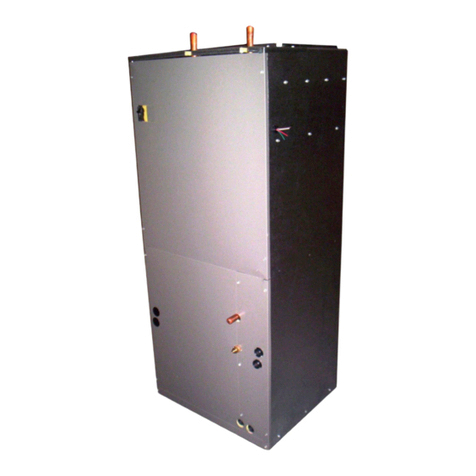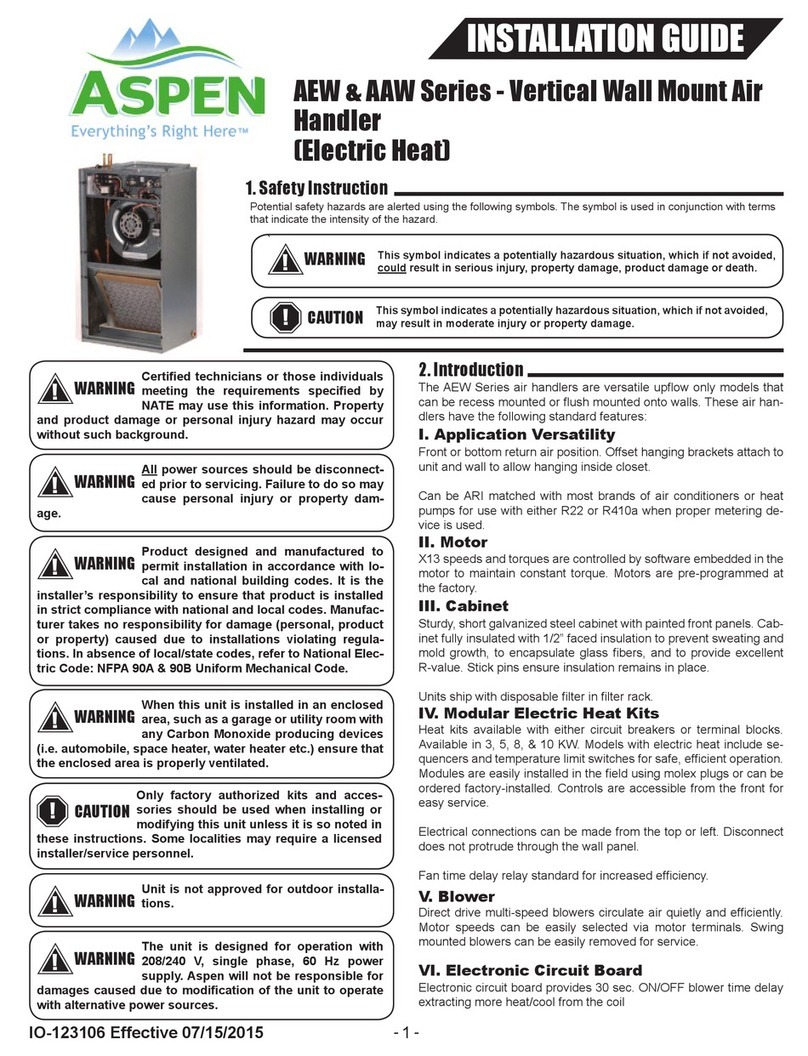CONDENSATE DRAIN CONNECTIONS
A minimum trap of 1-1/2" must be in the drain line so
that there is proper drainage. The drain lines must be
installed to slope away from the fan coil. These units
are equipped with a bottom primary and secondary
drain and a single side primary or secondary. When
utilizing a unit disable switch on the secondary line, it
must be located on the side connection to avoid a false
shutdown created by condensate droplets falling into
the bottom secondary connection. It should be
adjusted to permit normal operation of the unit and
disable the unit in the event of a clogged primary
before the condensate spills over the pan. In lieu of
this, a hood may be field fabricated to slide over the
secondary to keep droplets out but allow trapped
condensate into the secondary fitting.
HOT WATER CONNECTIONS
The connections to the hot water coil are 3/4" (7/8"OD)
copper tubing. The hot water inlet is located on the top
right of the unit (a label on the unit clearly identifies the
correct connection). All piping connecting the fan coil to
the house water system should be 3/4" (7/8"OD)
copper tubing or 3/4" nominal CPVC with appropriate
CPVC to copper fittings. This size tubing will prevent
loss of head pressure. The total length of piping used
to connect the fan coil to the water heater should not
exceed 200 feet for 3/4" nominal copper and 120 feet
for 3/4" nominal CPVC. Use "T" fittings at the water
heater to connect into the house water system. These
"T" fittings must be installed on the vertical hot and
cold supply lines of the water heater shown in Figure 3.
The connections from the fan coil unit are made to the
horizontal connections of the "T" fittings. This will allow
air to be purged from the system when water is used in
the home. Between the fan coil and water heater
connections, two valves (provided by the installer)
must be installed to permit purging of air in the system
and also to allow the hot water coil in the unit to be
separated from the house water system during
servicing.
PURGING THE SYSTEM
1. Open air vent and allow water heater to fill with
water. Close air vent when water heater is full and all
air has been purged.
2. Ignite water heater. Set thermostat on water heater
to 140 degrees.
DANGER!
140-degree water can cause first-degree burns. We
strongly recommend the installation of a water-
tempering valve (for water temperatures above 140-
degrees) to supply lower temperature water to the
fixtures in the house. Use Watts N170L series or
equivalent.
1. Close the valve on the hot water supply from the
water heater ("A") and open the valve on the cold-
water return then the water heater ("B"). Then open the
air vent in the fan coil. Use bucket or hose to discard
water during purging process at air bleed valve. Purge
air completely from lines.
2. Once air is purged, close return valve ("B") and open
supply valve ("A"). Purge the coil and lines of air
completely.
3. After air is purged from the system and filled with
water, open the return valve ("B") and the supply valve
("A"). Then close the air vent in the fan coil.
4. Apply power to the fan coil and set the room
thermostat on heat. Raise the temperature setting to
activate the circulating pump.
5. Check the pump to insure proper operation. The
water inlet of the unit should be hot if the water
temperature in the water heater has reached the set
point. If water is not being circulated through the coil
but the pump is running, then open the air bleed valve
in the unit and purge any air left in the system.
6. Adjust the water heater thermostat so that the water
temperature entering the hot water coil is 120 to 180
degrees depending on the amount of heat required by
the structure. This is done with the unit energized and
operating long enough for all temperatures to stabilize.
























